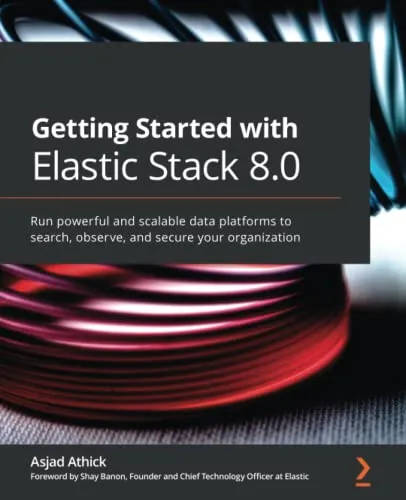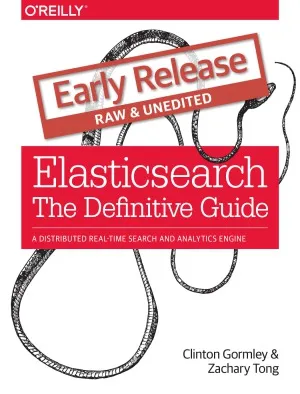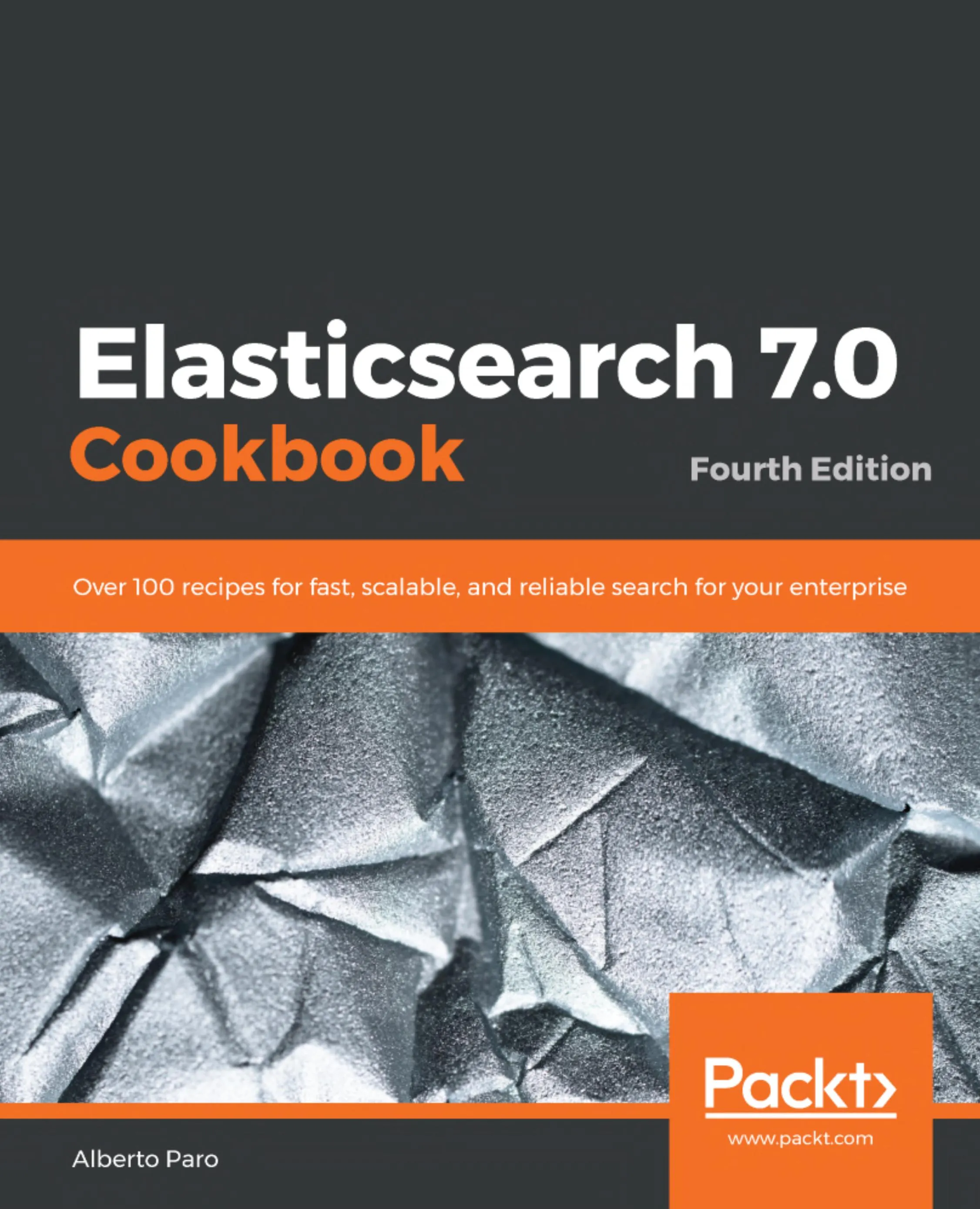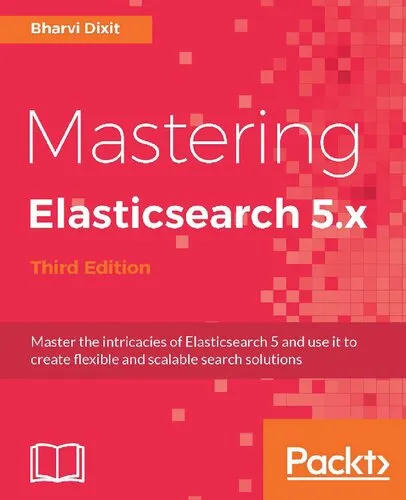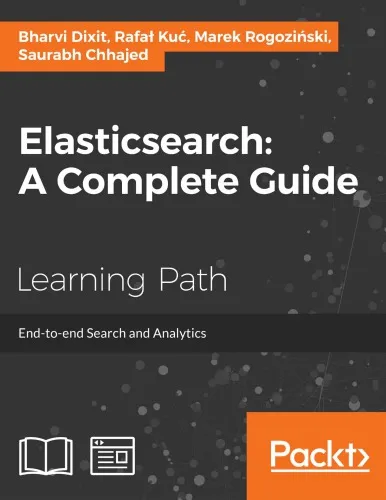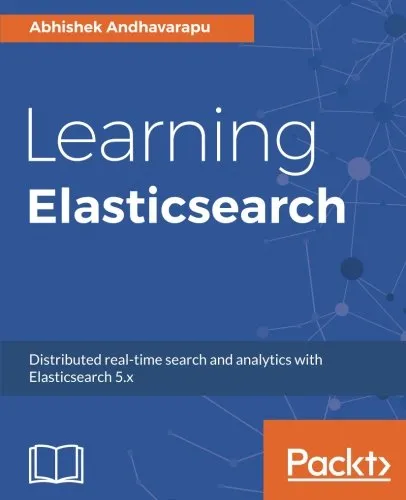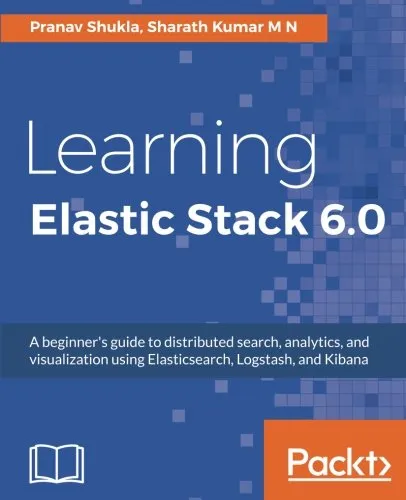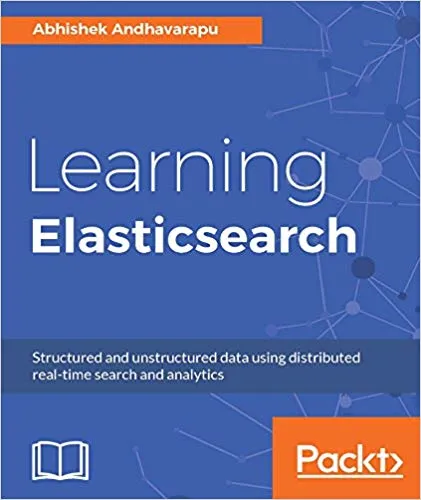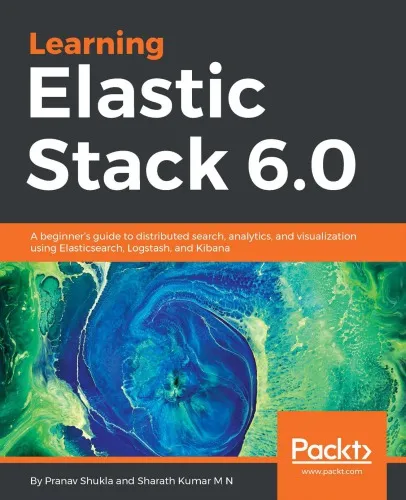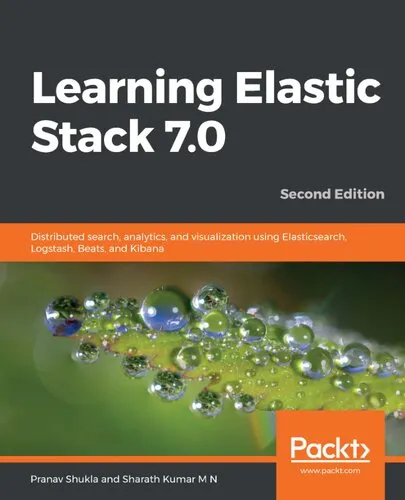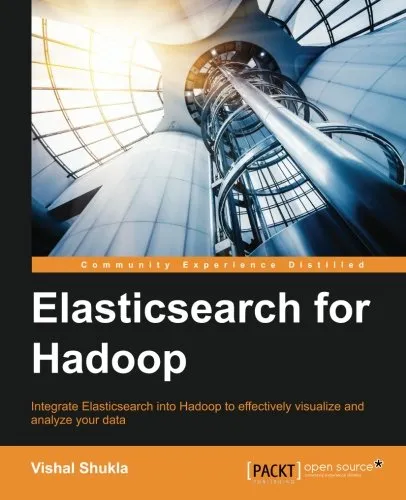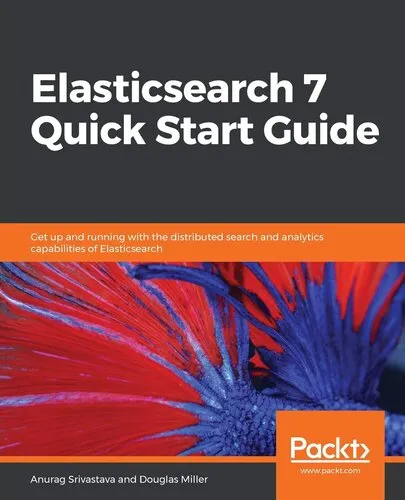Getting Started with Elastic Stack 8.0: Run powerful and scalable data platforms to search, observe, and secure your organization
4.0
بر اساس نظر کاربران

شما میتونید سوالاتتون در باره کتاب رو از هوش مصنوعیش بعد از ورود بپرسید
هر دانلود یا پرسش از هوش مصنوعی 2 امتیاز لازم دارد، برای بدست آوردن امتیاز رایگان، به صفحه ی راهنمای امتیازات سر بزنید و یک سری کار ارزشمند انجام بدینکتاب های مرتبط:
Persian Summary
معرفی کامل کتاب 'Getting Started with Elastic Stack 8.0'
کتاب 'Getting Started with Elastic Stack 8.0' یک راهنمای جامع برای استفاده بهینه از پلتفرم Elastic Stack ارائه میدهد. این کتاب برای افرادی که به دنبال جستجو، نظارت و ایمنسازی دادههای سازمان خود هستند، منبعی ضروری به حساب میآید.
خلاصهای دقیق از کتاب
این کتاب با تمرکز بر Elastic Stack 8.0، به شما کمک میکند تا از این ابزار قدرتمند برای ایجاد پلتفرمهای داده مقیاسپذیر استفاده کنید. با پوشش جنبههای مختلفی همچون Elasticsearch، Kibana، Logstash، و Beats، هدف این کتاب این است که شما را از مراحل شروع گرفته تا پیچیدگیهای پیشرفته کار با این ابزارها آشنا کند.
در آغاز، شما با مبانی Elastic Stack آشنا میشوید و سپس به تفصیل درباره نصب و پیکربندی هر یک از اجزای آن توضیح داده میشود. فصلهای میانی کتاب به مباحث پیشرفتهتر مانند طراحی شاخصها، بهینهسازی عملکرد جستجو، و پیادهسازی راهحلهای امنیتی اختصاص یافتهاند. در پایان نیز، به موارد عملی تبدیل دادهها و تحلیل دادههای پیچیده پرداخته میشود.
نکات کلیدی
- درک کامل اجزای Elastic Stack و نحوه همکاری آنها با یکدیگر
- توانایی نصب و پیکربندی Elastic Stack با روشهای بهینه
- مهارت در تحلیل دادههای پیچیده و اجرای جستجوی هوشمند
- یادگیری روشهای پیشرفته امنیتی برای محافظت از دادهها
جملات معروف از کتاب
"Elastic Stack چیست و چرا باید از آن استفاده کنیم؟ این سؤالی است که پاسخ آن در قلب تمام فعالیتهای جستجو و نظارت بر دادههای سازمانی قرار دارد."
"با Elastic Stack، میتوانید بهطور موثر اطلاعات حیاتی را از دادههای در حال رشد استخراج کنید و به تصمیمگیریهای آگاهانهتر دستیابید."
چرا این کتاب مهم است
کتاب 'Getting Started with Elastic Stack 8.0' یک منبع حائز اهمیت برای مهندسان داده، تحلیلگران و کارشناسان فناوری اطلاعات است که میخواهند از تواناییهای Elastic Stack برای بهبود عملکرد سازمان خود بهرهبرداری کنند. با توجه به رشد روزافزون دادهها و پیچیدگیهای مرتبط با آنها، این ابزارها به شما امکان میدهند تا جستجو و نظارت بر دادهها را بهینهسازی کرده و امنیت اطلاعات سازمان خود را به شکل چشمگیری افزایش دهید.
تجربه عملی ارائه شده در کتاب و مثالهای واقعی، شما را قادر میسازد تا نه تنها تکنیکهای جدید بیاموزید بلکه آنها را فوراً در پروژههای خود پیادهسازی کنید. این کتاب به شما کمک میکند تا از دادههای خود بهترین استفاده را بکنید و در نتیجه ارزش واقعی از دادهها را برای کسب و کار خود استخراج کنید.
Introduction to Getting Started with Elastic Stack 8.0
In today's data-driven world organizations are constantly seeking ways to unlock insights from their data to drive business growth improve customer experiences and stay ahead of the competition. The Elastic Stack formerly known as the ELK Stack has emerged as a powerful and scalable data platform to search observe and secure organizations. As the author of "Getting Started with Elastic Stack 8.0 Run powerful and scalable data platforms to search observe and secure your organization" I am excited to introduce this comprehensive guide to help you get started with the Elastic Stack.
Detailed Summary of the Book
This book is designed to provide a hands-on introduction to the Elastic Stack covering the fundamentals of Elasticsearch Kibana Beats and Logstash. You will learn how to set up and configure the Elastic Stack index and search data visualize data with Kibana and secure your cluster. The book also covers advanced topics such as data ingestion data transformation and data analysis.
Throughout the book you will work on real-world examples and projects including setting up a logging pipeline monitoring system metrics and analyzing network traffic. You will also learn how to use the Elastic Stack to solve common use cases such as log analysis security analytics and APM Application Performance Monitoring.
The book is divided into 12 chapters each covering a specific topic or use case. Chapter 1 introduces the Elastic Stack and its components while Chapter 2 covers the installation and setup of the Elastic Stack. Chapters 3-6 cover the fundamentals of Elasticsearch including data indexing searching and aggregation. Chapters 7-8 cover Kibana and data visualization while Chapters 9-10 cover Beats and Logstash. Chapters 11-12 cover advanced topics such as security monitoring and troubleshooting.
Key Takeaways
By reading this book you will gain the following key takeaways
- Understand the fundamentals of the Elastic Stack and its components
- Learn how to set up and configure the Elastic Stack
- Discover how to index and search data with Elasticsearch
- Learn how to visualize data with Kibana
- Understand how to secure your Elastic Stack cluster
- Learn how to use the Elastic Stack to solve common use cases such as log analysis security analytics and APM
- Understand how to use Beats and Logstash for data ingestion and transformation
- Learn how to monitor and troubleshoot your Elastic Stack cluster
- Discover how to use the Elastic Stack to drive business growth and improve customer experiences
Famous Quotes from the Book
Here are some famous quotes from the book
"The Elastic Stack is more than just a logging pipeline it's a powerful data platform that can help you unlock insights from your data."
"Data is the new oil and the Elastic Stack is the drilling rig that can help you extract insights from your data."
"With the Elastic Stack you can turn your data into actionable insights that can drive business growth and improve customer experiences."
"Don't just collect data use the Elastic Stack to turn your data into insights that can propel your business forward."
Why This Book Matters
In today's fast-paced data-driven world having a powerful and scalable data platform like the Elastic Stack is crucial for businesses that want to stay ahead of the competition. This book matters because it provides a comprehensive guide to getting started with the Elastic Stack covering everything from the basics to advanced topics. Whether you're a developer data analyst or IT administrator this book can help you unlock the full potential of the Elastic Stack and turn your data into actionable insights.
Moreover this book is written in a way that's easy to understand with real-world examples and projects that make it easy to learn and apply the concepts. The book is also up-to-date with the latest version of the Elastic Stack covering all the new features and improvements.
In short "Getting Started with Elastic Stack 8.0" is a must-read for anyone who wants to unlock the full potential of the Elastic Stack and turn their data into insights that can drive business growth and improve customer experiences.
دانلود رایگان مستقیم
شما میتونید سوالاتتون در باره کتاب رو از هوش مصنوعیش بعد از ورود بپرسید
دسترسی به کتابها از طریق پلتفرمهای قانونی و کتابخانههای عمومی نه تنها از حقوق نویسندگان و ناشران حمایت میکند، بلکه به پایداری فرهنگ کتابخوانی نیز کمک میرساند. پیش از دانلود، لحظهای به بررسی این گزینهها فکر کنید.
این کتاب رو در پلتفرم های دیگه ببینید
WorldCat به شما کمک میکنه تا کتاب ها رو در کتابخانه های سراسر دنیا پیدا کنید
امتیازها، نظرات تخصصی و صحبت ها درباره کتاب را در Goodreads ببینید
کتابهای کمیاب یا دست دوم را در AbeBooks پیدا کنید و بخرید
سوالات پرسیده شده از این کتاب
11906
بازدید4.0
امتیاز1
نظر98%
رضایتنظرات:
4.0
بر اساس 1 نظر کاربران
merkousha
4 فبریه 2024، ساعت 7:52
it's an amazing stack i work with it in 3 companies and result is same : Amazing!
Questions & Answers
Ask questions about this book or help others by answering
No questions yet. Be the first to ask!
